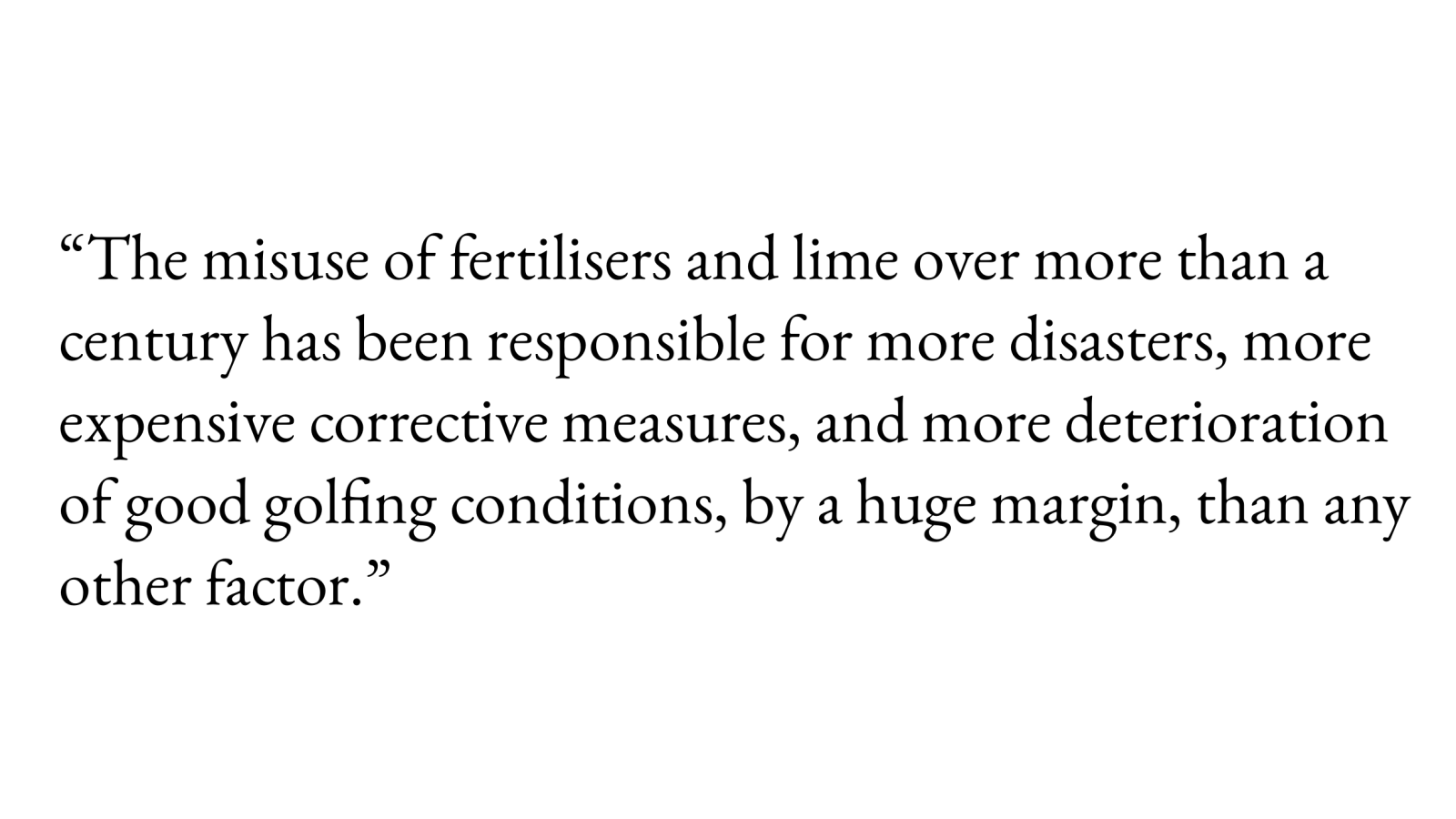I moved my books to a different room in my home office earlier this month.

One of those books contains this strongly-worded sentence.

These “disasters,” “expensive corrective measures,” and “deterioration of good golfing conditions” are completely avoidable. In fact, another of the books on those shelves has this quote:
“Fertilizer is the number one management tool. It is worth all the attention you can give it.”
How can we avoid the misuse of fertilizer, and instead take advantage of this “number one management tool” to achieve the results we are looking for? If you’d like to learn about techniques being used to do just this, and to hear from a few people using these techniques, here’s an eclectic list to get started:
- My book A Short Grammar of Greenkeeping gives an overview.
- James Sergeant described the results he is getting with these techniques. In short, “Members very happy visitors envious!”
The greens @SudbrookMoorGC really dialled in thanks to #ClipVol. First readings this time last yr were averaging 30ml/m2 we have gone 3 wks hitting 10ml/m2. 75% less N so far this year! Members very happy visitors envious! Thanks to @asianturfgrass @PenderSuper for their ideas! pic.twitter.com/1tpwDxvPMp
— James Sergeant (@lonegreenkeeper) June 22, 2018
- Jason Haines wonders if feast or famine nutrient applications may be better than light and frequent.
- Just yesterday, Andrew McDaniel showed surfaces (and roots) produced without application of fertilizer P, Ca, or carbon—except the C in urea—for the past five years.
Baffling. No coring, no Ca, no P, no C... what could possibly be driving these roots? #MLSN pic.twitter.com/8QR3HnipCr
— Andrew McDaniel (@drumcturf) June 23, 2018
- To learn more about MLSN, I recommend the MLSN cheat sheet.